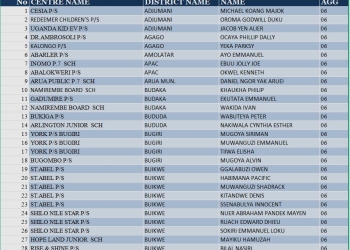
In a move reverberating across the Indo-Pacific, China has officially inaugurated a naval facility at Cambodia’s Ream Naval Base, marking a significant expansion of Beijing’s military presence beyond its borders. While long anticipated, the development has heightened concerns among regional powers and global observers, who view it as a bold step in China’s bid to project power far from its shores.
Located on Cambodia’s southern coast along the Gulf of Thailand, Ream provides China with a strategic maritime outpost within reach of key shipping lanes in the South China Sea and the wider Indo-Pacific. Defence analysts say the base will enable the People’s Liberation Army Navy (PLAN) to extend its operational reach, further complicating Southeast Asia’s already fragile security environment.
For Cambodia, the base’s expansion was presented as a milestone in national modernisation. Officials insist the project is aimed solely at strengthening domestic naval capabilities. Prime Minister Hun Manet, speaking at the inauguration, dismissed claims that the facility is for exclusive Chinese use, pointing to Cambodia’s constitutional ban on hosting foreign military forces.
However, satellite imagery, intelligence assessments, and statements from U.S. officials point to extensive Chinese involvement in upgrading and operating the base.
At the heart of regional unease is the symbolism of Ream. For many, it exemplifies China’s strategy of combining economic investment, political influence, and military cooperation to establish strategic footholds. This follows a familiar pattern — from Djibouti in Africa to militarised artificial islands in the South China Sea — where China’s moves, viewed collectively, paint a troubling picture of its ambitions.
For the United States and its allies, China’s presence at Ream raises pressing security concerns. The base’s proximity to critical maritime chokepoints like the Strait of Malacca — a vital artery for global trade — could allow China to monitor, or even disrupt, maritime traffic between the Pacific and Indian Oceans. Strategically, it adds to China’s growing encirclement of Southeast Asia, placing additional pressure on nations such as Vietnam, Thailand, and the Philippines, which already struggle to balance economic ties with China and their own strategic autonomy.
Regional responses have been swift but measured. Vietnam, wary of China due to longstanding historical tensions, has expressed muted concerns but is reportedly recalibrating its naval strategy. The Philippines, already locked in maritime disputes with China, is likely to interpret the move as further evidence of Beijing’s assertiveness. Even Indonesia, typically cautious in its China policy, is quietly reassessing the shifting security landscape.
Outside Southeast Asia, the development has also drawn attention. In Tokyo, officials privately acknowledge that China’s moves in Cambodia complicate Japanese defence planning. In Canberra, policymakers view the Ream base as confirmation of a deteriorating security climate in the Indo-Pacific — reinforcing efforts like AUKUS, the trilateral security partnership between Australia, the United Kingdom, and the United States, aimed at ensuring regional stability.
China has downplayed the development, framing it as part of broader efforts at “peaceful cooperation,” “maritime security,” and “regional stability.” Yet these reassurances are met with scepticism, given Beijing’s history of masking military ambitions behind civilian or cooperative fronts. The transformation of commercial outposts in the South China Sea into fortified military bases remains a stark precedent.
The Ream base fits into a broader geopolitical strategy in which China seeks to reshape the balance of power in the region. Through the Belt and Road Initiative (BRI), Beijing has established a sprawling network of infrastructure that increasingly carries military potential. The dual-use nature of many BRI projects offers China the ability to pivot economic assets for strategic purposes when needed.
Cambodia’s role in this dynamic is particularly revealing. Phnom Penh has emerged as one of Beijing’s most loyal partners in Southeast Asia, often aligning with Chinese positions at ASEAN and other forums. In return, China has poured billions into Cambodian infrastructure and development. Critics argue that this deepening reliance undermines Cambodia’s sovereignty and entrenches its place in China’s strategic orbit.
The broader implications are sobering. The Ream base could mark the start of a new phase in Southeast Asia’s military competition. While the U.S., India, Japan, Australia, and others advocate for a “free and open Indo-Pacific,” China’s latest move suggests a rival vision — one based on strategic entrenchment and regional dependencies.
At a time when the global order is already under strain — from armed conflicts to economic uncertainty — China’s new foothold adds yet another layer of complexity. The Ream Naval Base may be just one facility, but its significance goes far beyond geography. It is a clear signal of China’s long-term strategic intent, and a wake-up call for those invested in preserving a stable, balanced Indo-Pacific.

















